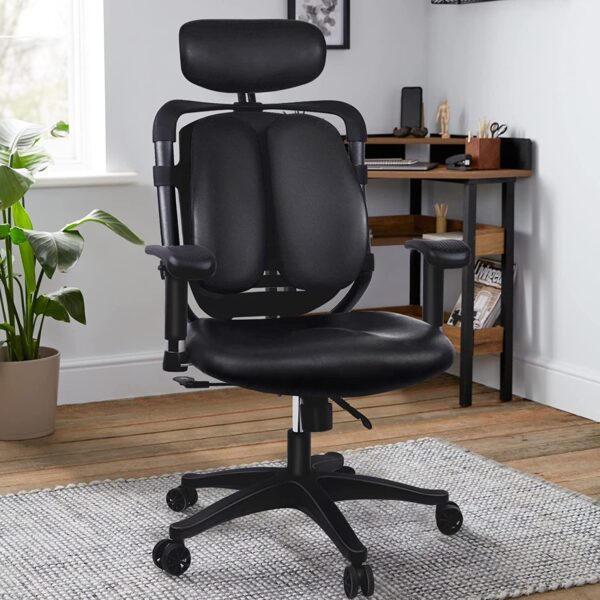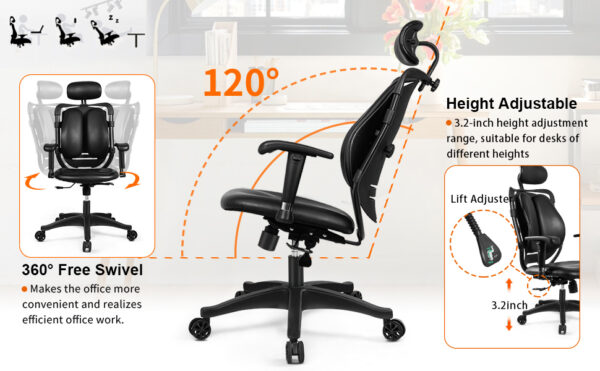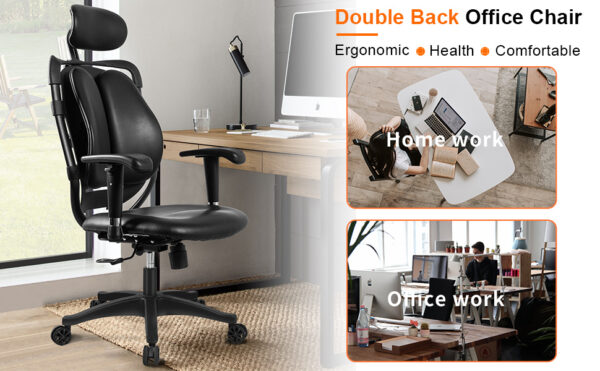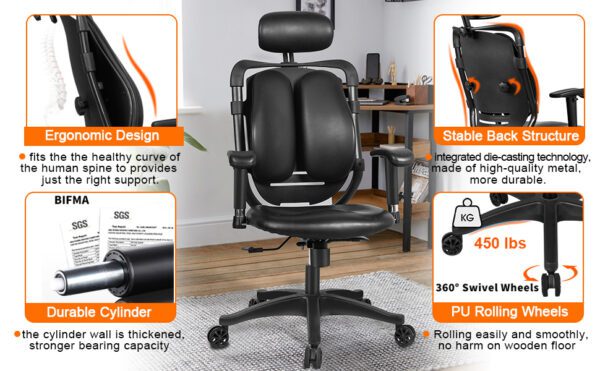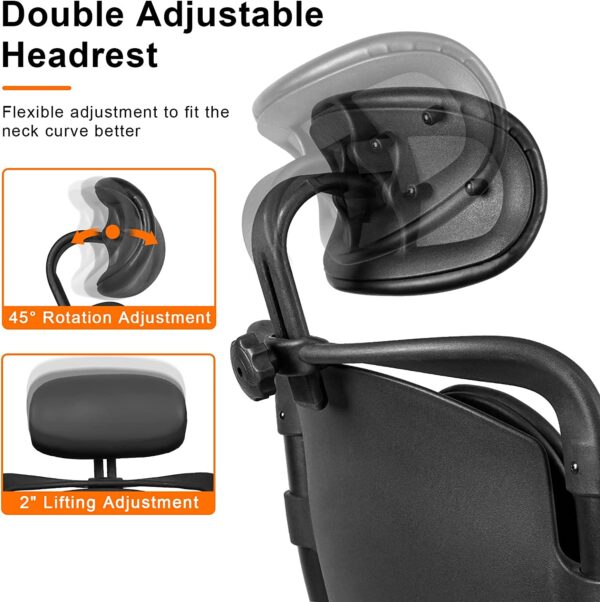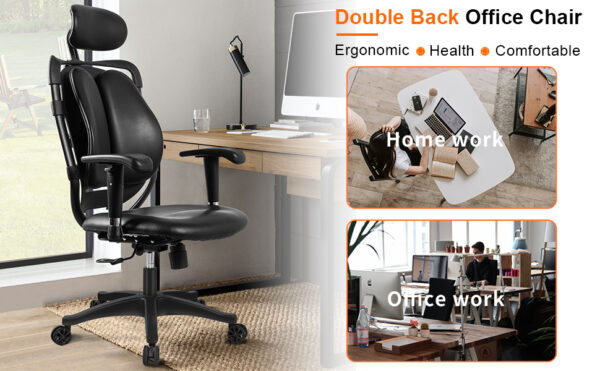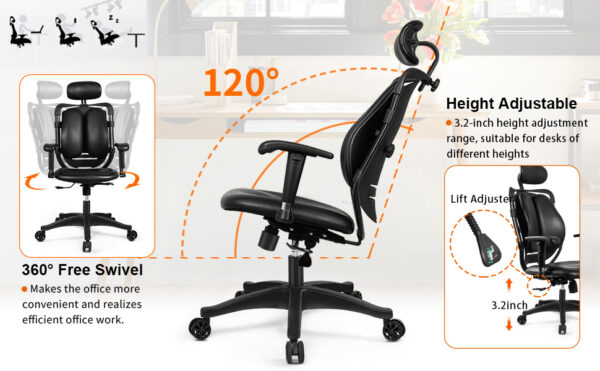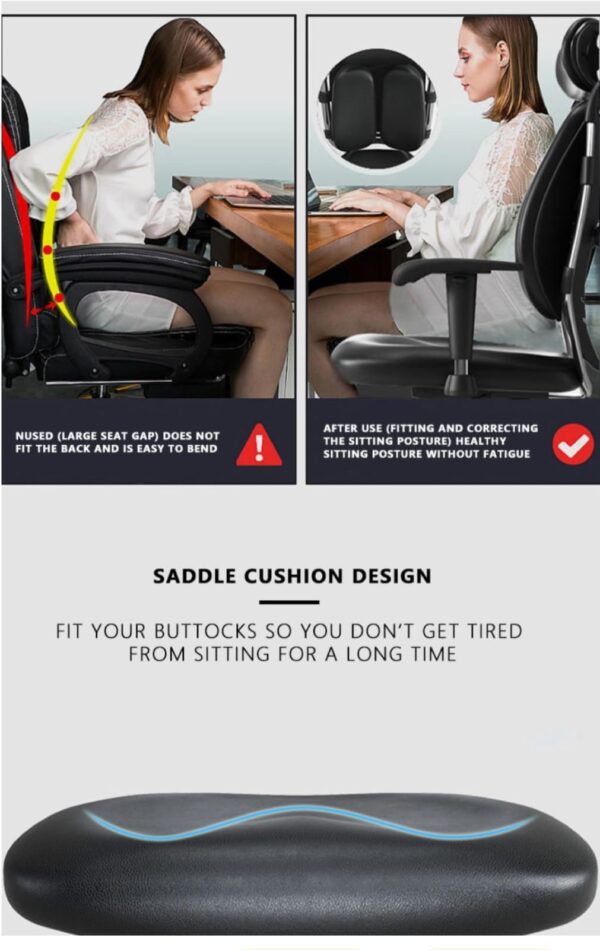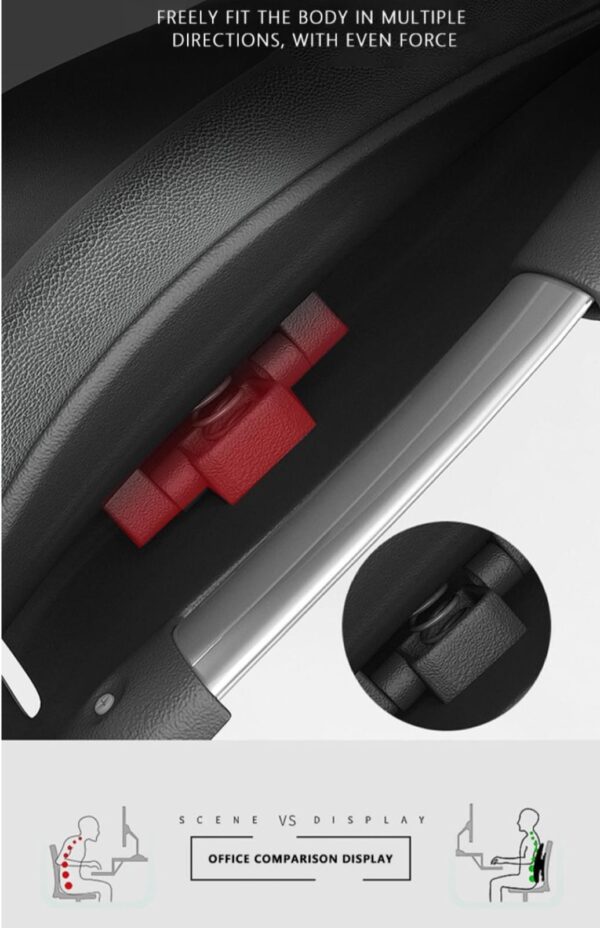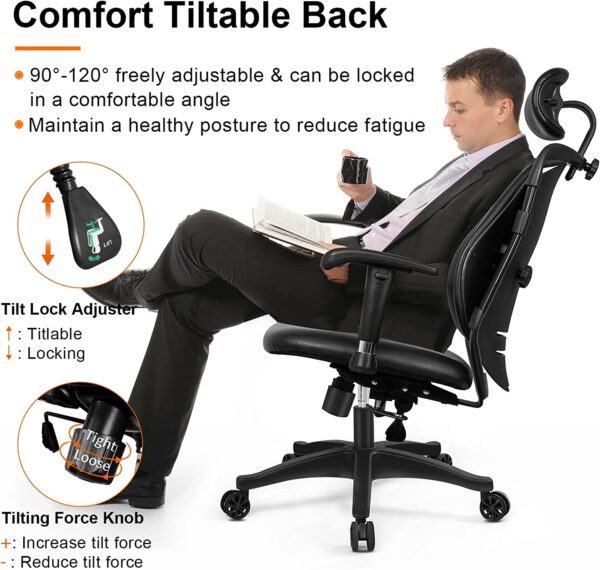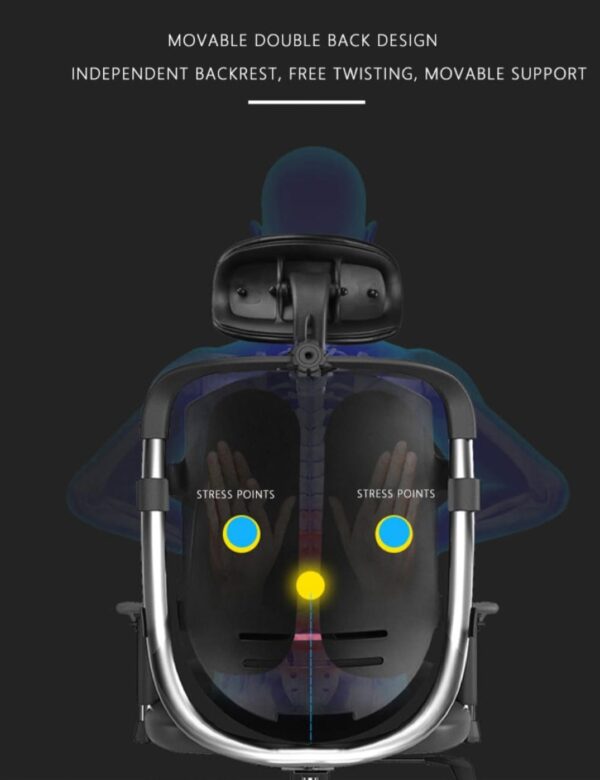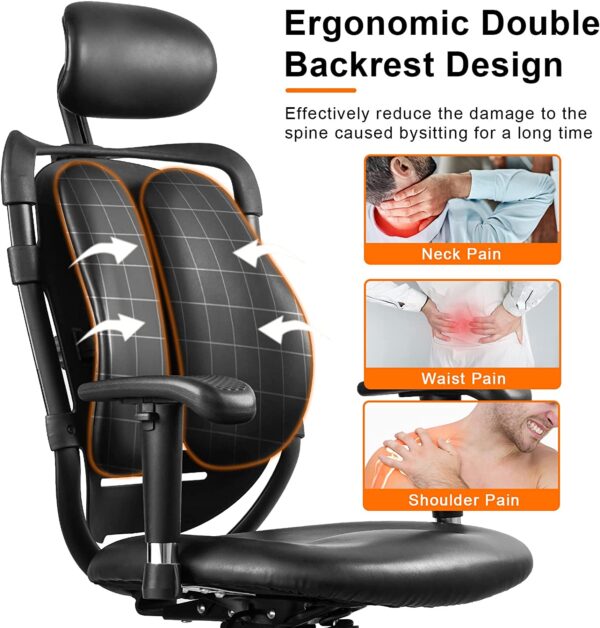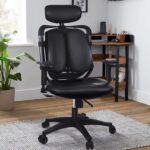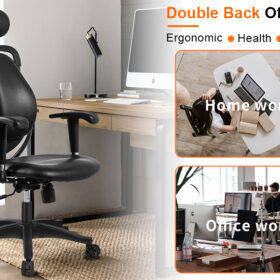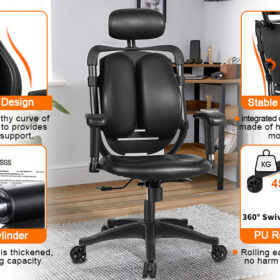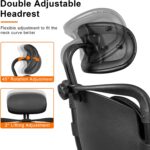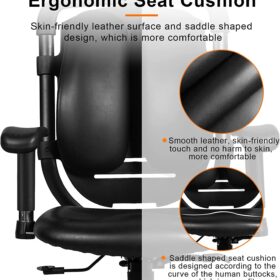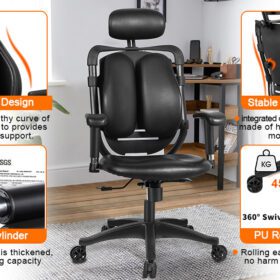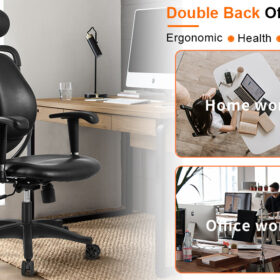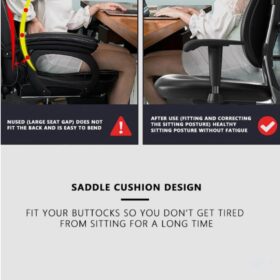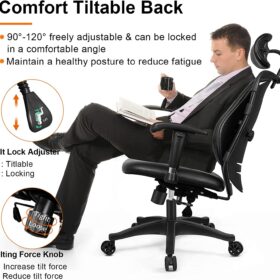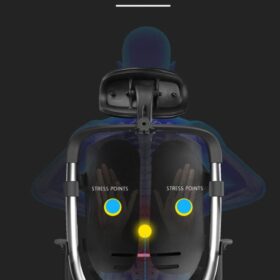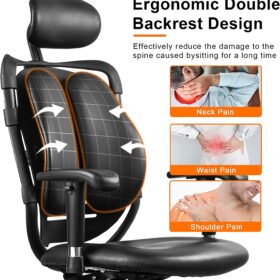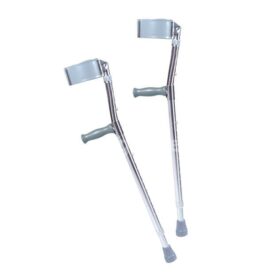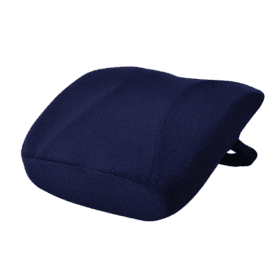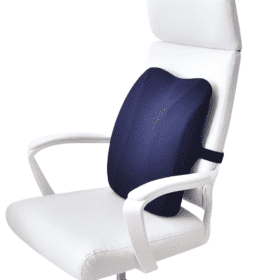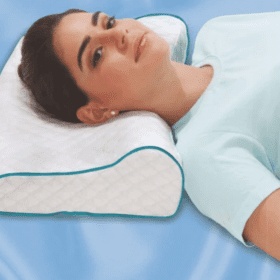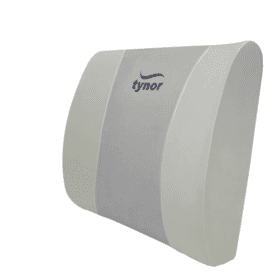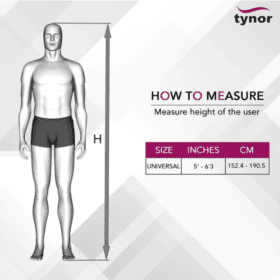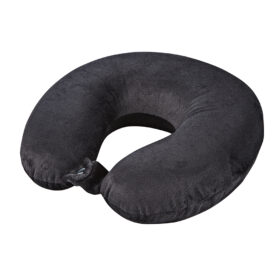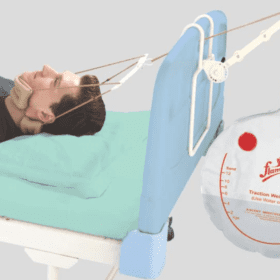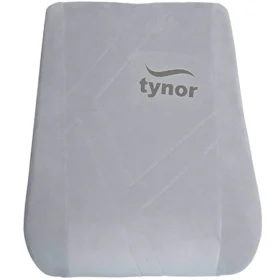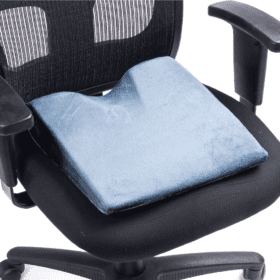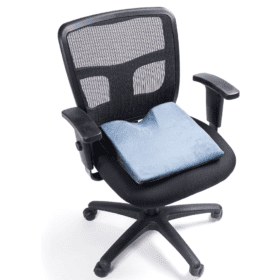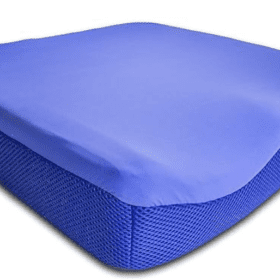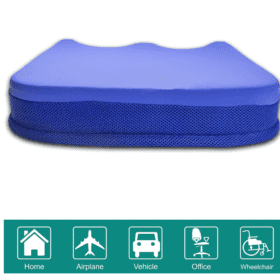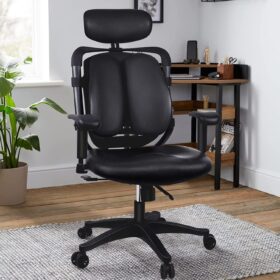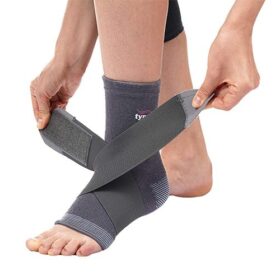Do you find that your back aches after a full day at work and your neck and shoulders are stiff and sore? Perhaps the chair you are sitting in is not very beneficial for your back? Sitting in a poorly designed chair can cause strain, discomfort, stiffness and soreness. These effects are not noticeable right away, but if the chair does not provide sufficient support for your spine it will cause problems over time.
Human beings did not evolve to be sitting down all day long – our bodies thrive better when we walk and move around. However, in this information age many of us have computer-based jobs that require us to sit at a desk for our entire workday. Orthopedic chairs help to combat the strain of caused by sitting for too long.
What is an Orthopedic Chair?
An Orthopedic chair is designed to provide your spine and skeletal system with the best possible support. It offers support for the lumbar region of your spine so that you can sit in a position that keeps you from hunching over and straining your shoulders. There are many different types of orthopedic chairs available out there, but what they all have in common is that they are focused on the comfort of your spine.
What are the Benefits of an Orthopedic Chair?
What are some of the benefits that an orthopedic chair has to offer?
It supports your posture, keeping your spine in a healthy position and preventing you from slouching or hunching your shoulders.
Orthopedic chairs are more comfortable than normal chairs and they can be adjusted to your body type so that they fit your needs.
An orthopedic chair can help to reduce stiffness in the neck and shoulder region which can decrease your risk of cervical spondylosis.
Orthopedic chairs also reduce the pressure on your hips, because they have a cushion that supports your buttocks and hips.
Most orthopedic chairs are designed to make working easy. They usually have a swivel function that will enable the user to move swiftly without having to extend or strain in any way.
How to Choose an Orthopedic Chair?
What to Consider
When you are choosing an orthopedic chair there is a lot to consider. The same chair will not be suited for everyone and there are several factors to keep in mind. First of all, consider your bodily dimensions when you are choosing a chair. The armrests should be high enough to support your arms, the chair should be at the right height so that your feet can rest on the floor and the back support should reach the appropriate height at your back. As a general rule the optimal height for the seat should be around one quarter of your body height.
Take a close look at the seat height, it should be easily adjustable. The width and depth of the seat should be enough to support your body and there should also be lower back support.
One of the most important features of an orthopedic chair is the level of back support that it offers. Different back shapes and contouring will provide support to different areas of the spine.
The seat size is something to take into consideration when you are choosing a chair. When you are seated with your buttocks against the back of the chair the seat should extend along your thigh and stop just short of contacting the back of your knee joint. The cap between the front edge of the seat and the back of the knee should be approximately the width of three fingers.
If you choose a chair with a seat that is too long then it will press against the back of your knee joint and cause blood flow issues. Or, it might cause you to sit too far ahead on the chair, which negates the back support that the chair is able to offer. Of course, if the seat is too short you will not get the support along the leg that you need, which can also lead to increased pressure on the back on your mid thighs.
It is also important to look for a chair seat that is made of some form of high density and high quality foam. The foam will make the chair more comfortable and will help it to conform to the shape of your body. There are even modern technologies such as gel seats and memory foam that will allow the chair itself to change and adapt for each individual user.
Another consideration when choosing an orthopedic chair is whether or not it should have a foam moulded backrest or a mesh backrest. The advantage of a foam moulded backrest is that it will provide a fitted back shape with a great deal of lumbar support, which can be better for your back. An advantage of a mesh chair is that it will provide airflow, making it cooler and more comfortable in a warm working environment.
Do you want an orthopedic chair with armrests or without them? Some people prefer armrests because they will support the arms for reading and in other positions, as well as help with transferring in and out of the chair. If you are considering a chair with armrests, you might want to choose adjustable armrests so that you can fit them to your size and arm length. However, keep in mind that some physiotherapists do not recommend chairs with armrests because they can limit the movement of the chair under the desk, which will cause you to lean forward and move your spine out of alignment.
To help you choose your orthopedic chair you should also consider the height of the desk that you will be sitting at. Your chair should be the right height so that you can slide your legs under the desk comfortably and rest your arms at the right angle when you are working and typing. Make sure that you measure your desk before you go shopping for chairs.
Keep these tips in mind so that you can find the right orthopedic chair for your needs.
WATCH VIDEO BELOW



